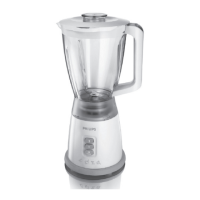AUTOMATIC TRANSMISSION ± On-vehicle Service
23-45
HYDRAULIC PRESSURE TEST
The hydraulic pressure test is important in determining the
causes of transmission failures. Before conducting the test,
fluid level and condition and throttle cable adjustment, etc.
must be checked for defects or abnormalities. When conducting
the test, the engine and transmission should be at correct
operating temperatures, (engine coolant 80 ± 95_C,
transmission fluid 70 ± 90_C.)
LINE PRESSURE TEST
1. Place the vehicle on a chassis dynamometer.
2. Remove the plug from the line pressure take off port.
3. Install special tools as shown in the figure and place the
meter inside vehicle.
4. Apply the parking brake.
5. Start the engine.
6. Place the selector lever in the ªDº range.
7. Depress the brake pedal firmly by the left foot and operate
the accelerator pedal by the right foot to measure the
line pressure at each engine r/min. If the measured
pressure is not nominal, check adjustment of the throttle
cable and readjust if necessary before conducting the
test again.
8. Place the selector lever in the ªRº range and test as above.
Standard value:
Items Line pressure kPa
ªDº range ªRº range
At idle 373 ± 422 520 ± 579
At stall 765 ± 863 1,383 ± 1,628
JUDGEMENT BY LINE PRESSURE
Hydraulic pressure higher than nominal in all ranges (1) Regulator valve faulty
(2) Throttle valve faulty
(3) Throttle cable incorrectly adjusted
Hydraulic pressure lower than nominal in all ranges (1) Oil pump faulty
(2) Regulator valve faulty
(3) Throttle valve faulty
(4) Throttle cable incorrectly adjusted
(5) Overdrive clutch faulty
Hydraulic pressure lower than nominal in ªDº range (1) Large fluid leaks in ªDº range hydraulic circuit
(2) Forward clutch faulty
(3) Overdrive clutch faulty
Hydraulic pressure lower than nominal in ªRº range (1) Large fluid leaks in ªRº range hydraulic circuit
(2) Brake No. 3 faulty
(3) Direct clutch faulty
(4) Overdrive clutch faulty
MD998920
MD998331
MD998330

